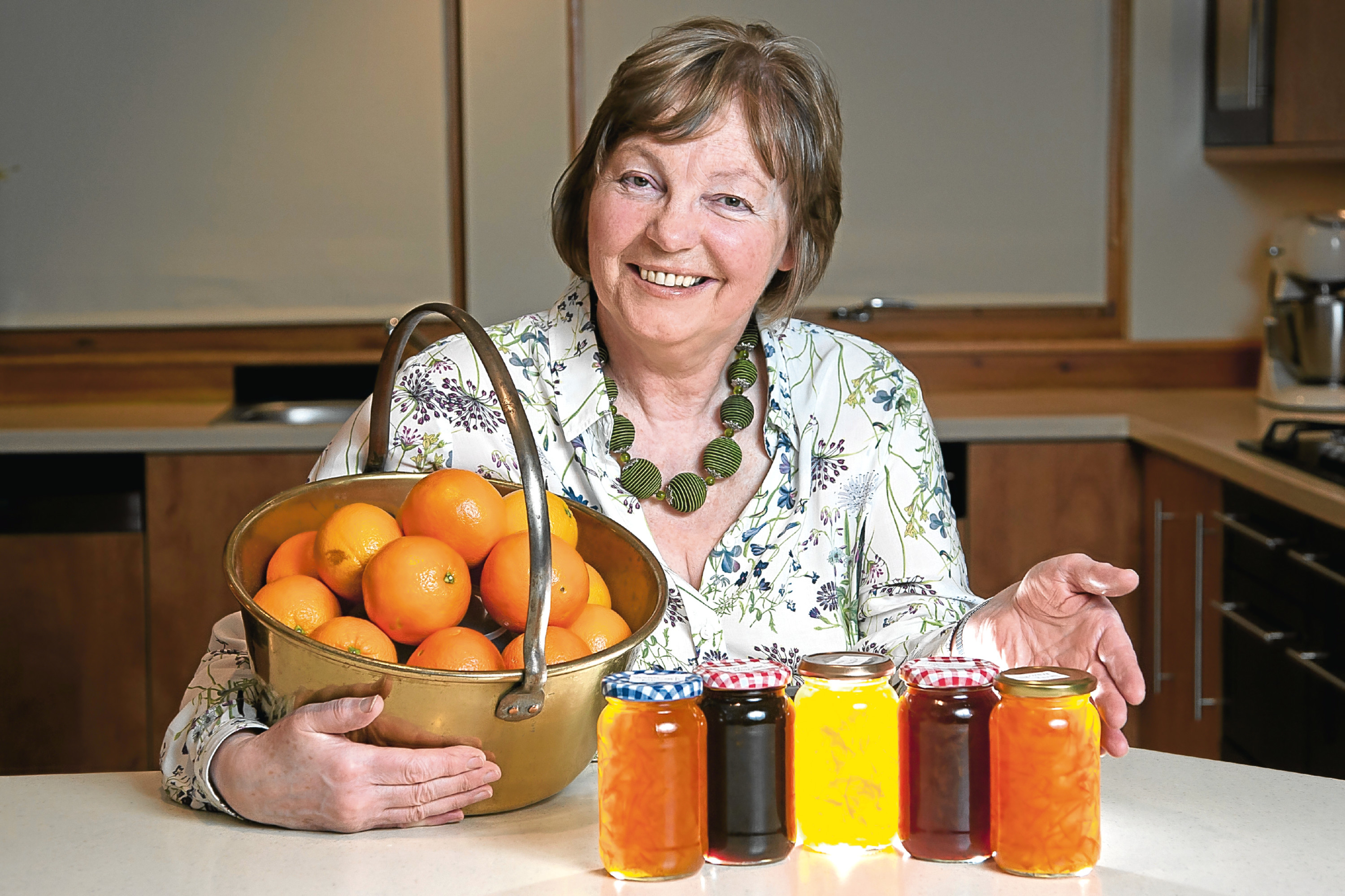
SCOTLAND has reclaimed marmalade as its own – after a farmer’s daughter from Monifieth triumphed at the world “jeelie championships”.
Last year, the conserve world was left in a spin after a food historian claimed the sugary spread was an English – not Scottish – invention.
But marmalade’s Scottish credentials have now been given a major boost by retired school teacher Shona Leckie, whose homemade treacle treat scooped Best in Show at the World Marmalade Awards in Cumbria.
Shona is the first Scot to clinch the top prize.
“It proves we can still do it in Scotland, and that the tradition of marmalade-making in Scottish kitchens is very much alive,” the 65-year-old said last night.
The former head teacher of biology from Monifieth,named her orange spread Miss Minto’s Marmalade.
It was made from an old family recipe using Seville oranges with her own addition of Tate & Lyle cane sugar treacle, which darkens it and helps to keep the medium-cut peel intact, so intensifying the flavour of the oranges.
It saw off some 3000 entries from 30 countries, including Japan, Taiwan, Singapore, Canada, the US, the Lebanon, Czech Republic and Columbia as well as England.
Yuzu, fennel, chocolate and seaweed were some of the more unusual ingredients used alongside the mandatory Seville oranges.
Miss Minto’s Treacle Marmalade will now be produced and sold by Fortnum & Mason in London’s Mayfair and at Dalemain House in Cumbria, where the awards were founded in 2005.
A donation from each jar will go to Mrs Leckie’s chosen charity of the Halo Trust, based in Scotland, which helps clear landmines in war-torn countries.
“I’m surprised and delighted at the accolade,” she added.
Her triumph is sure to re-ignite the debate over whether the orange preserve we know today was invented by Janet Keiller in her Dundee kitchen, or in Henry VIII’s England – as has been claimed.
Some claim England was first to make the preserve which started out in the early 15th Century as marmelos, a sugary quince paste imported from Portugal said to have been enjoyed by Henry VIII before 17th-century cooks made their own “marmelade”; using squished whole citrus fruit. It was cut into slices and eaten mainly after a meal as an aid to digestion – as membrillo still is today.
The earliest Scottish recipe for orange marmalade by the Countess of Sutherland dates back to 1683.
The Scottish food writer F. Marian McNeill described orange marmalade as “a Scottish invention”.
For centuries it’s been accepted that Janet Keiller of Dundee was first to make the breakfast marmalade we know today – using a shipload of Seville oranges purchased by her husband at Dundee harbour to make a spreadable orange preserve of shredded peel rather than squished whole fruit pulp.
The Keiller family went on to become first to produce it on a commercial scale from 1797.
However, food historian Ivan Day, a judge at the awards, said: “There’s no real evidence that Janet Keiller invented marmalade as we know it – though I’d get my throat cut if I said that in Dundee.
“But it would appear the family was first to mass-produce marmalade on a large scale, so the marmalade industry, if not marmalade itself, could have been founded in Dundee.
“The only really Scottish thing about marmalade is that the Scots were first to serve it at breakfast in the 18th Century.
“Dundee is very much part of the marmalade gene pool.”
Meanwhile Mrs Leckie is happy to spread the word – marmalade’s roots still run deep in Dundee.

Enjoy the convenience of having The Sunday Post delivered as a digital ePaper straight to your smartphone, tablet or computer.
Subscribe for only £5.49 a month and enjoy all the benefits of the printed paper as a digital replica.
Subscribe